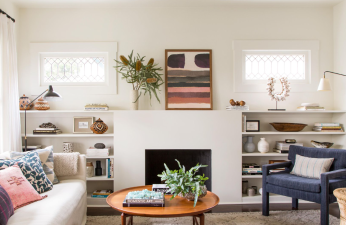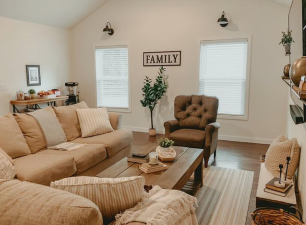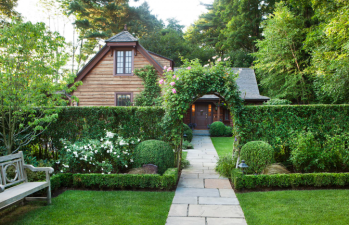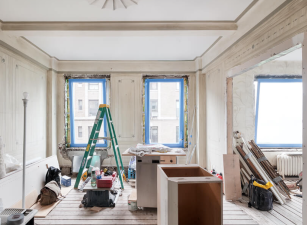Living Room Renovation Ideas for Small Spaces
The living room is a relaxing space for the whole family to gather and entertain guests, and it's also a relatively frequent destination for activities. However, some apartments have small living rooms, and limited space means the only way to enhance their size is through renovation and design.
If your living room is also narrow, you can make it appear larger and more open and airy through layout planning and visual enhancements.
Planning Space to Create a Sense of Transparency
In a small living room, maximize space utilization. Keep furniture minimal and choose relatively small, low-slung pieces to lower the visual center of gravity and minimize floor space occupation. It's generally recommended to use furniture with tall legs and thin legs, as this allows for more airflow and makes the floor easier to clean.
Furniture placement also plays a role. Try placing furniture close to the wall or using floating furniture to free up floor space, creating a light and airy appearance.
Tip:
You can also integrate the space into the balcony for an integrated design. This creates a visual extension, enhances the living room's size, provides better lighting, and creates a more airy feel.

Three-dimensional storage creates a tidy and spacious space
A space that's uncluttered will appear larger and cleaner.
When decorating your living room, consider organizing it. Three-dimensional storage makes full use of overhead space. For example, create built-in tall cabinets or create floor-to-ceiling storage cabinets against the TV or sofa wall, matching the wall color to hide clutter. Alternatively, use wall shelves or niches to store books and decorative items, keeping the countertop free.
In addition, for small living rooms, it's recommended to use multifunctional storage furniture, such as a storage sofa, a foldable dining table, or a floating TV cabinet with multiple drawers.
Use color to visually expand space
Living rooms are often small, but we can use color to create a visually larger space.
When decorating a small living room, it's recommended to use light colors, preferably white, beige, and light gray. These colors are versatile and create a sense of spaciousness.
This is primarily used on walls, ceilings, and floors. Large areas are eye-catching and reflect more light, creating a sense of visual expansion. Of course, in addition to using light colors wisely, it's also important to maintain color consistency to minimize visual interruption. Avoid overly contrasting colors and try to keep furniture, walls, and soft furnishings similar in color. If you want to add a lively feel to the space with contrasting colors, consider using small soft furnishings like pillows and ornaments.

Multi-layered lighting design to enhance space
Plan the lighting for different areas in your living room ahead of time, and try to create a multi-layered design. For example, consider combining a main light with a secondary light source: a ceiling lamp, paired with spotlights, light strips, floor lamps, or even wall lamps. These staggered lighting options create a brighter, clearer space by radiating light from multiple angles, eliminating shadows caused by a single light source.
If your home has bookcases, bookshelves, or decorative paintings, spotlights can be used to highlight them, drawing the eye upwards and creating a more spacious feel.
Tip:
In addition to creating a sense of depth through lighting, it's also important to ensure that natural light is brought into the living room as much as possible. Opt for sheer curtains or blinds, which both allow for ample light without the bulk of heavy curtains, creating a fresher, more spacious look.


